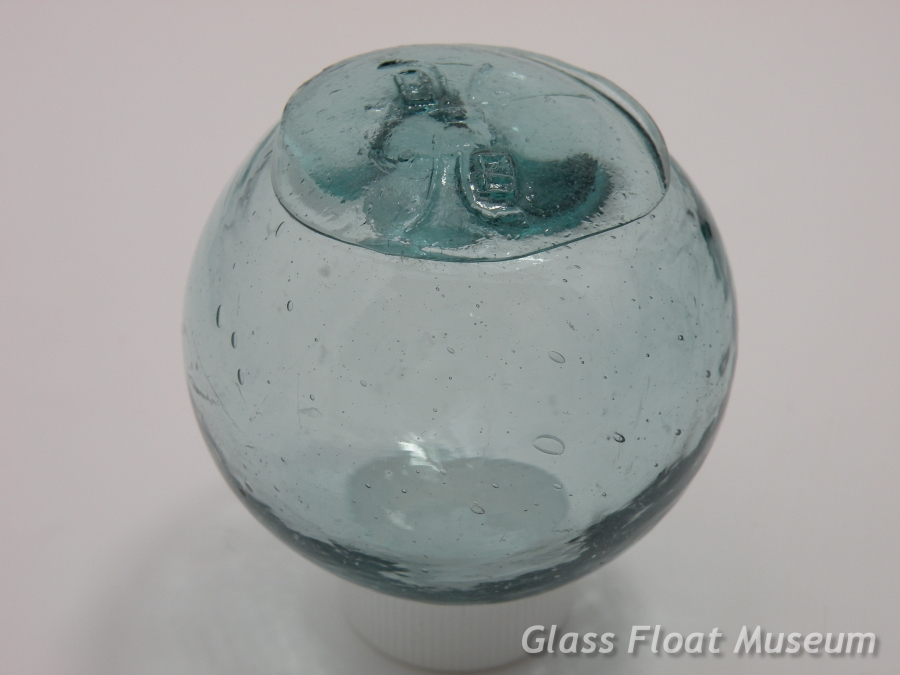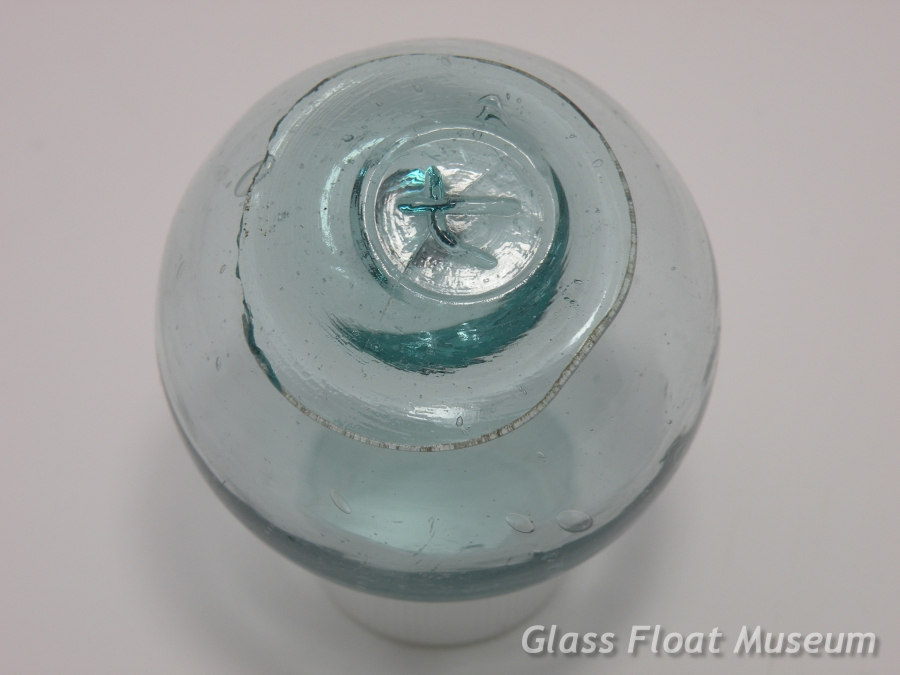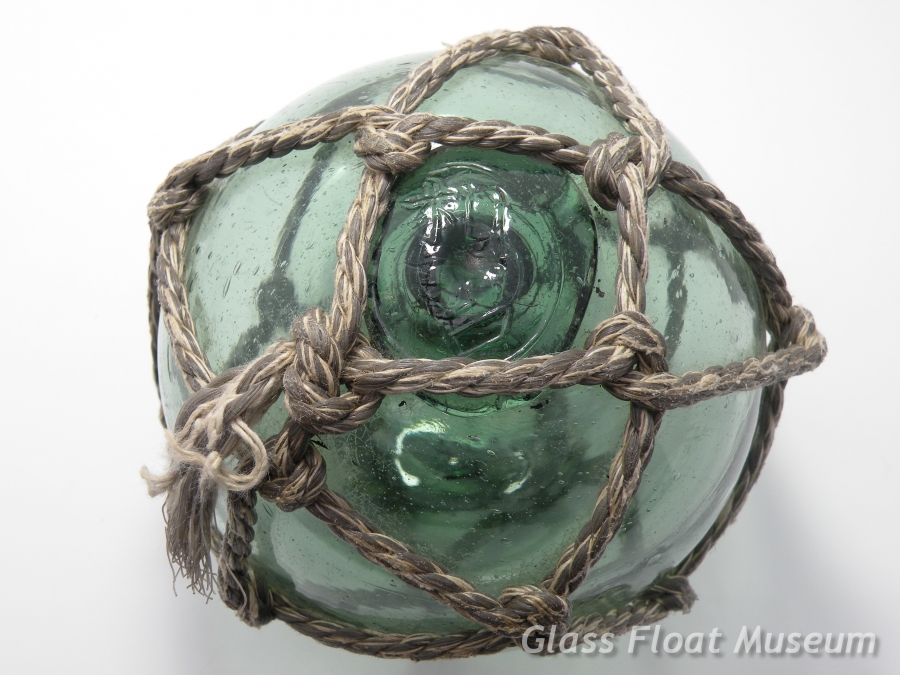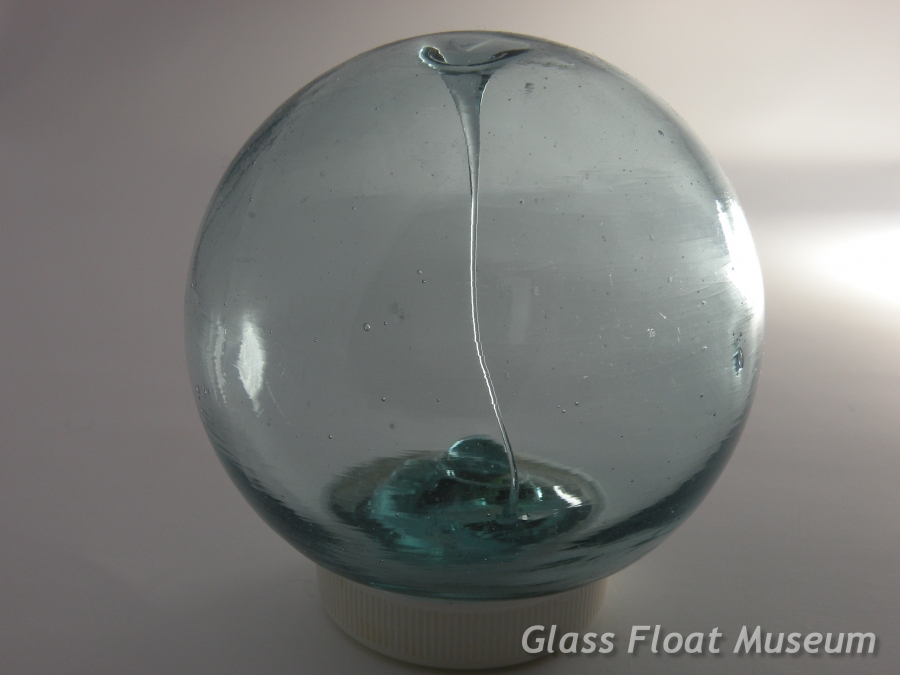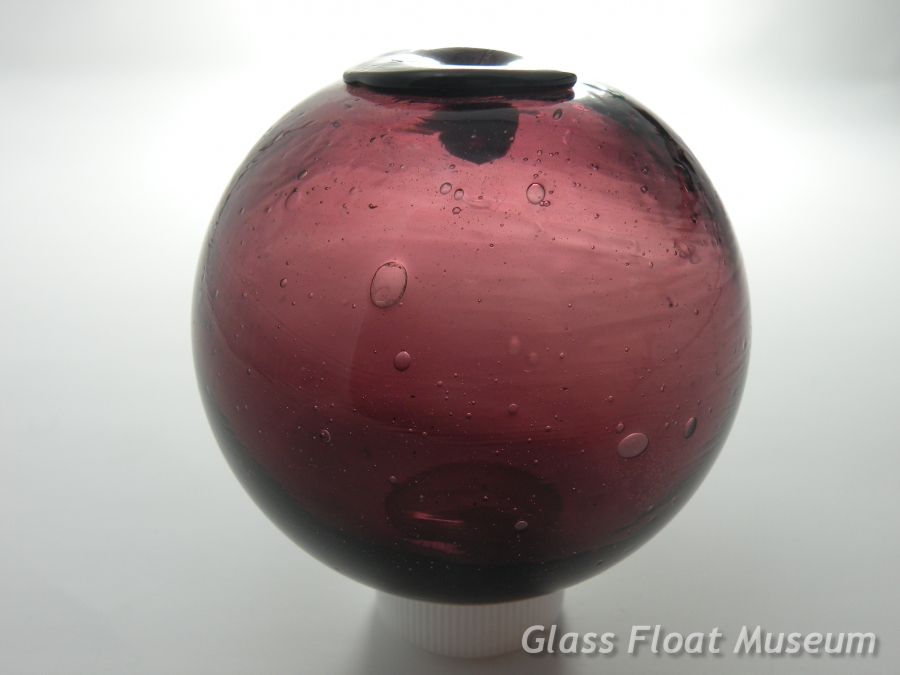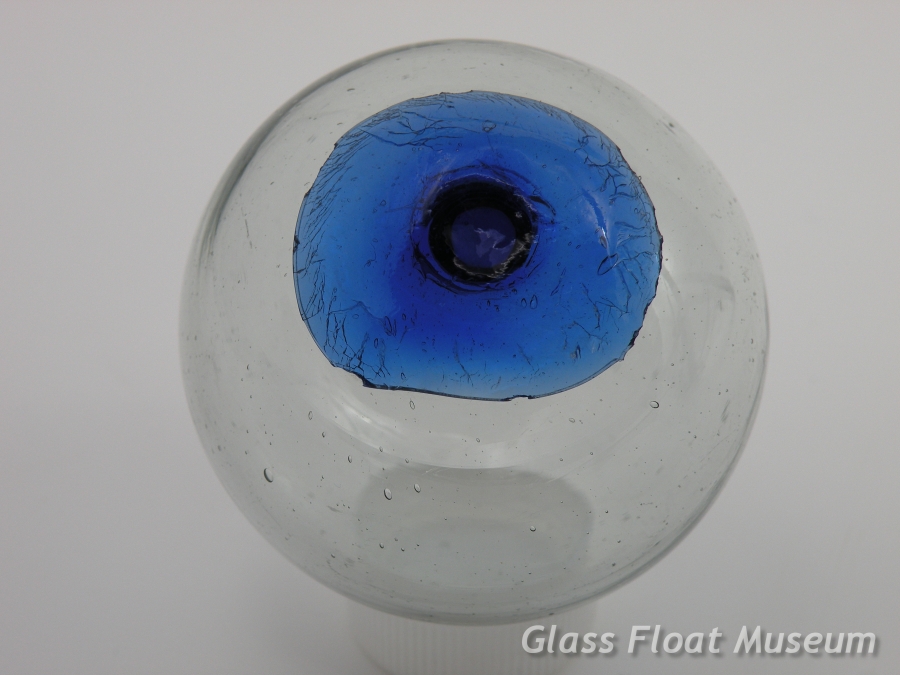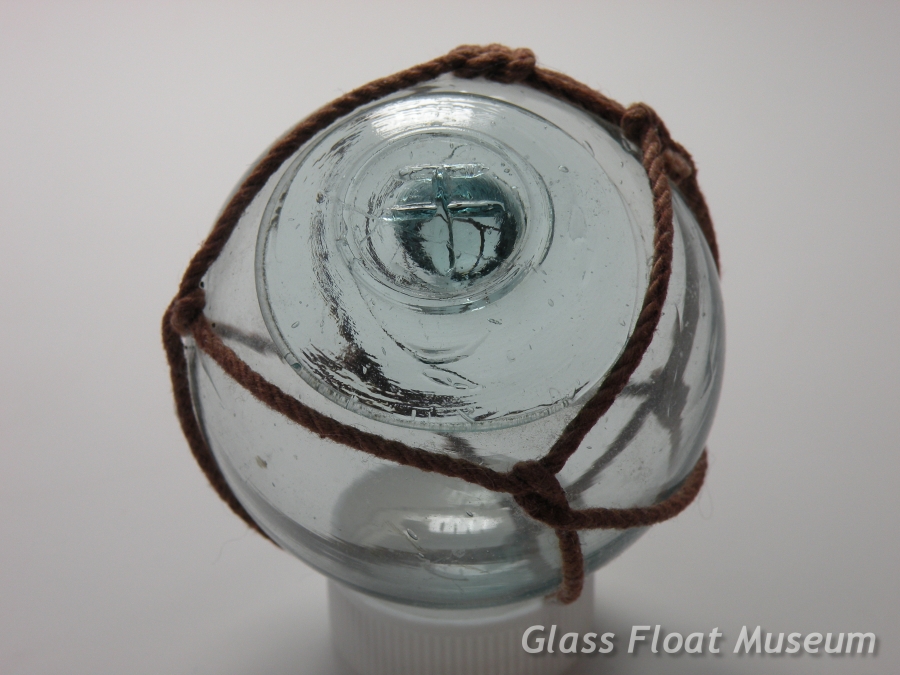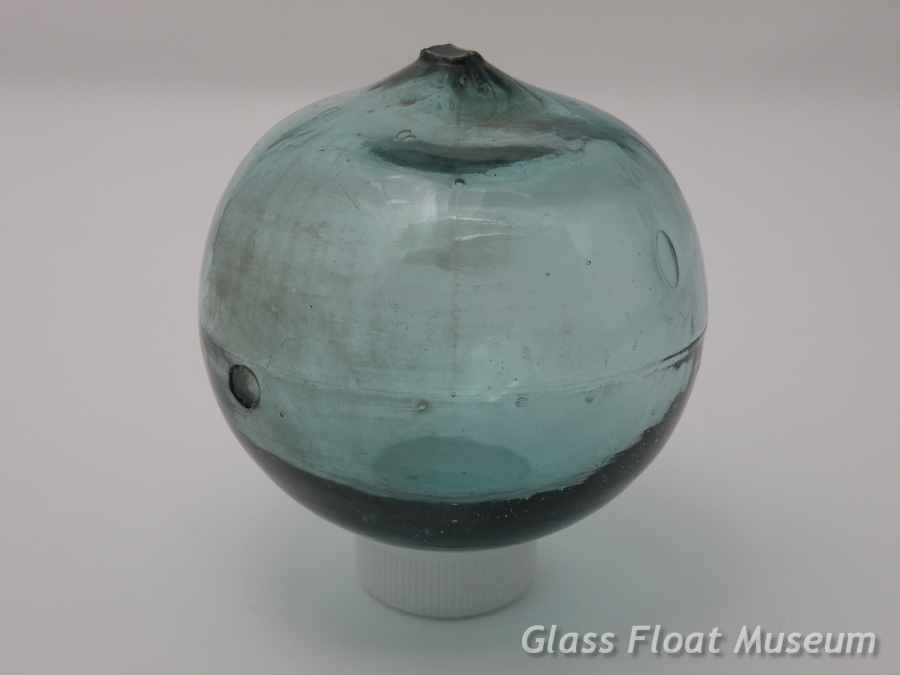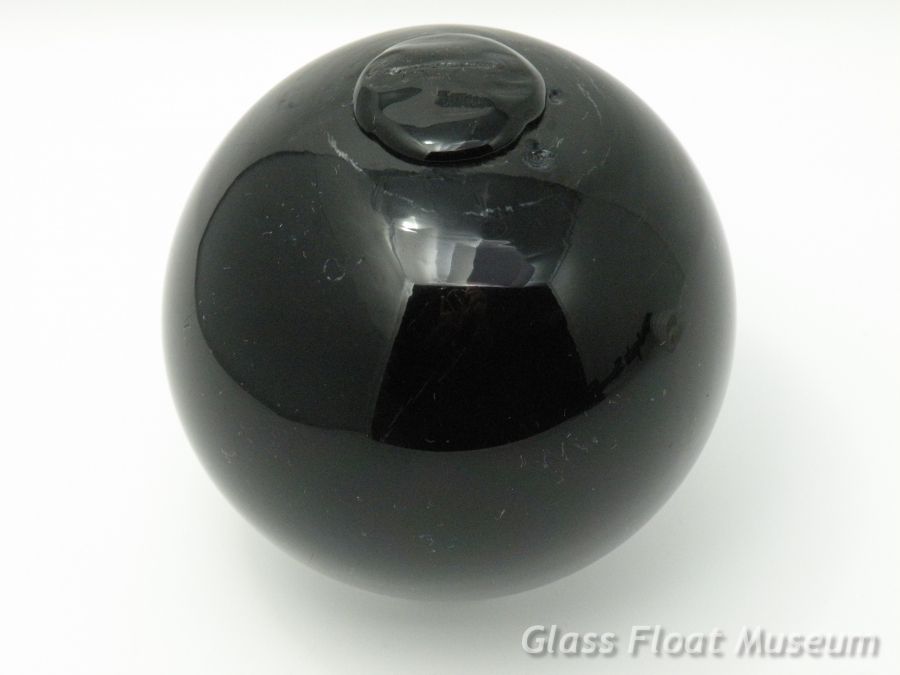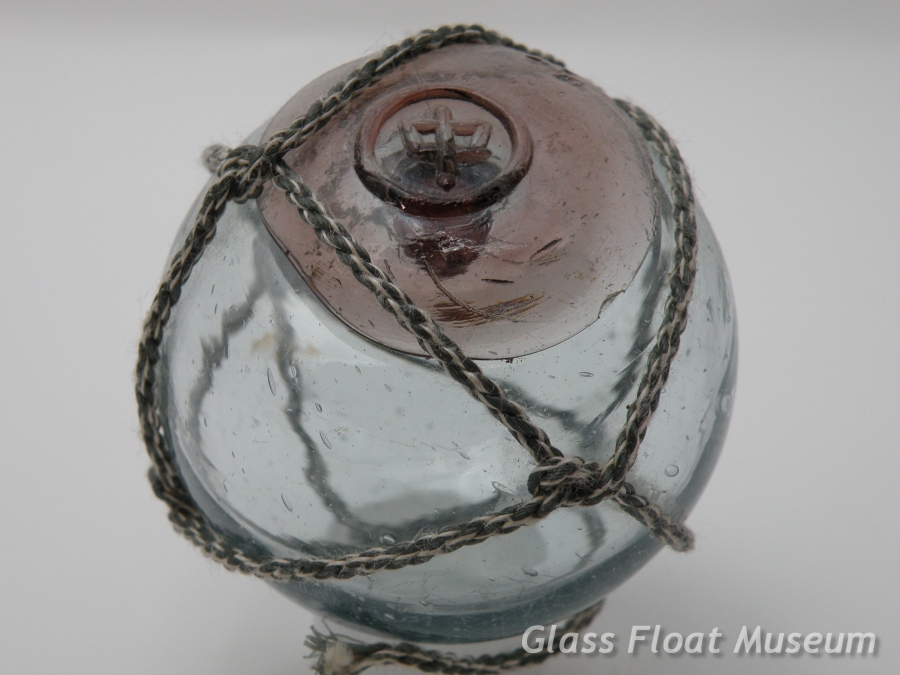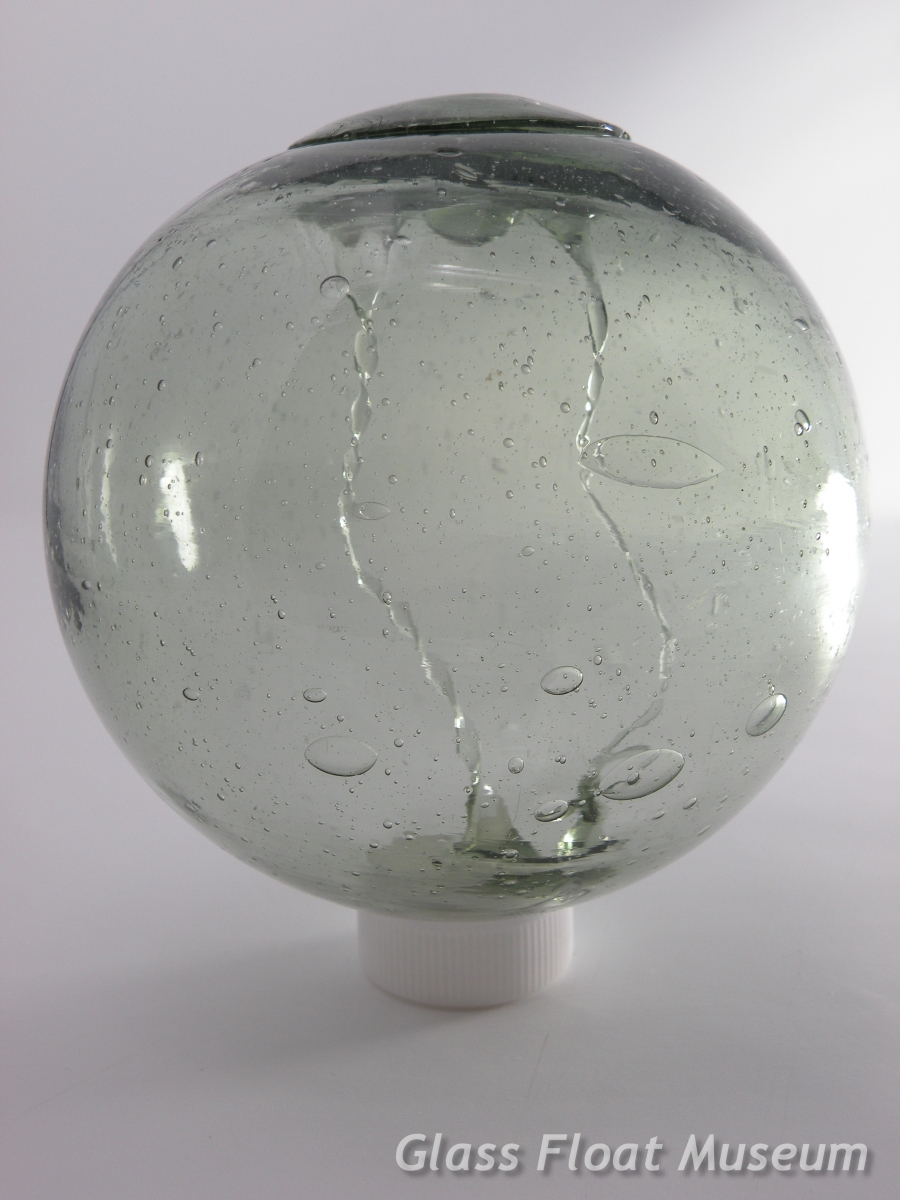
Keith Glein
Good example of WP #171 'Asahi' 旭 on a 2 1/2 inch float.
This is a nice stamp of this classic mark.
Found in Hawaii.
This appears to be an undocumented mark 'Maru Nana'. The 'Nana' 七 symbol is different than the 'Se' セ symbol in that there's no hook on the right end of the cross bar.
This is a perfect stamp.
This float measures 2 1/4 inches in diameter.
Found in Hawaii.
Nice example of a common Hokuyo Kita 北 or FF mark WP #2. It's a bold perfect stamp.
This float measures 3 inches in diameter.
The top two characters on this stamp are similar to mark WP #378 but there are other lines and symbols below the top two characters that make this a different mark.
Other differences are that mark WP #378 has only been found on 14" floats and the photo of the mark I saw was of a deep bold stamp.
This float is 5 inches in diameter and the mark is clear but is stamped rather lightly on the the seal.
Found in Northern Japan.
This float has excellent provenance having come from the ex-Col. Rich Richardson collection.
Single free standing Spindle that runs from top to bottom.
This float has a clear and complete stamp of WP #10 'Rivermouth' in it's typical triangular configuration.
The float measures 3 inches in diameter.
Found on Hokkaido Island, Japan.
Nice Japanese purple float that measures 3 inches in diameter.
This float features lots of ridges in the glass and has tons of bubbles. It's also heavy for its size.
It does not show the typical wear of a working float, so I assume it was made in the 1950's for the tourist trade. Still, it does display quite nicely.
The seal is a nice deep cobalt blue color on this unmarked float. The blue sealing button is a particular striking contrast to the clear glass of the rest of the float.
This blue seal is about 1 1/2 inches at its widest. The float measures 2 1/2 inches in diameter.
Found in Northern Japan.
This float has excellent provenance having come from the ex-Col. Rich Richardson collection.
This is a small 2 inch netted float with an uncommon mark WP #271 'Maru Chi' 千.
The stamp is perfect.
Found in Northern Japan.
This float has excellent provenance having come from the ex-Col. Rich Richardson collection.
This 3 inch glass ball is unusual for a couple of reasons.
First, it has a pinched end instead of the normal seal button.
Second, it was manufactured in the three-piece molded construction method.
It has been speculated that this could been an experimental design.
There are quite a few signs of use, so I think this was probably a working float.
Found in Northern Japan.
This float has excellent provenance having come from the ex-Col. Rich Richardson collection.
This Black float is a little bit of a mystery and the origin is unknown.
It has a couple of nicks and a few scratches but I'm not sure if this should be considered wear from use as a working float. The construction appears to contemporary.
It is extremely heavy for its size.
If nothing else this float is an oddity. You don't see a black float every day!
This is a 2 1/2 inch float with a Cranberry Seal button.
This was most likely used to fish for octopus as it is thought that the color attracts octopus.
The mark on the sealing button is WP #275-A, in Japanese 'Maru Naka' ㊥. Walt Pich states that the mark is one of the more uncommon marks for cranberry floats. The mark is encircled and perfect.
This is tightly netted with a couple of net strings still attached.
Found in Northern Japan.
This float has excellent provenance having come from the ex-Col. Rich Richardson collection.
This is one of my favorite floats. It has a striking Double Spindle where both are quite twisted.
The spindle on the left of center is a thin ribbon spindle with about a half dozen twists.
The other spindle on the right is more of the traditional 'tornado' looking shape but is still substantial with quite a few twists.
I have many double spindle floats but this one is probably my best.
This float measures 4 inches in diameter.
Found in Hokkaido Island, Japan.
